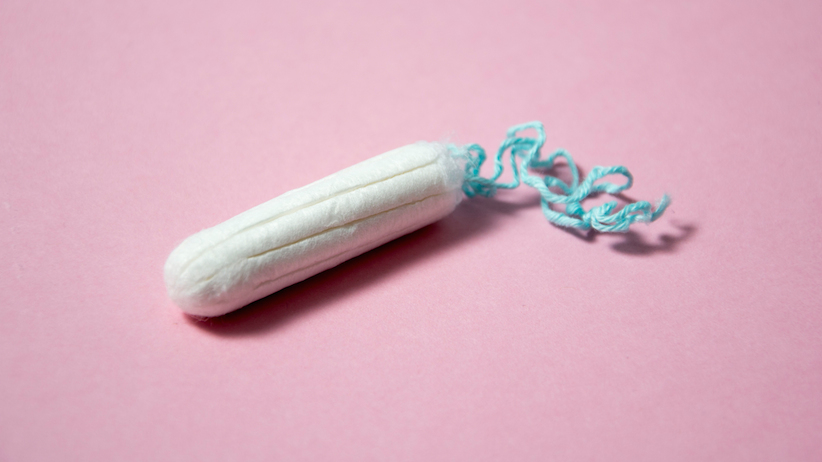The ‘tampon tax’ is gone, but the ‘tampon tariff’ lives on
Canada still charges a ‘tampon tax’ through its antiquated tariff regime, and it’s a perfect example of the red tape that’s burying importers
Share
 The federal government recently announced it is killing the “tampon tax,” effective July 1, by removing the GST on products that are “marketed exclusively for feminine-hygiene purposes.” This move, however, did not kill all the taxes on tampons, as a Kafkaesque set of import tariffs remain on these items, which ties up importers in significant amounts of red tape and generates, at most, $4 million in tax revenue for the federal government.
The federal government recently announced it is killing the “tampon tax,” effective July 1, by removing the GST on products that are “marketed exclusively for feminine-hygiene purposes.” This move, however, did not kill all the taxes on tampons, as a Kafkaesque set of import tariffs remain on these items, which ties up importers in significant amounts of red tape and generates, at most, $4 million in tax revenue for the federal government.
Determining if tampons are subject to tariffs and related products is not a trivial task. In fact, the proper tariff classification for panty-liners was once the subject of a case at the Canadian International Trade Tribunal. The first step for an importer is to obtain the correct tariff code from a 1,577-page Customs Tariff, which is not always simple. Fortunately, in this case, obtaining the code was relatively straightforward, as subheading 9619.00 covers “Sanitary towels (pads) and tampons, napkins and napkin liners for babies and similar articles, of any material.” Within that subheading, there are three tariff items that apply to pads and tampons, two of which have tariff rates above zero:
Importers must pay a 12 per cent tax on goods falling under tariff item 9619.00.92 and a seven per cent tax on goods falling under tariff item 9619.00.99. The importer may be able to use a preferential tariff treatment to reduce the tariff on these items (often to zero), as shown in the far-right column. These tariff treatments include UST (NAFTA United States Tariff), and the GPT (General Preferential Tariff), the latter which received a great deal of attention when dozens of countries were removed from Canada’s GPT list in Budget 2013. Importers must jump through a number of hoops to use a preferential tariff treatment, including obtaining (and retaining for several years) a “certificate of origin” from the exporting company, proving that the item meets the country-of-origin rules for the preferential treatment. These rules are far from simple, running into the hundreds of pages for each individual preferential treatment.
If all that were not complicated enough, Chapter 99 of the Customs Tariff contains override provisions that allow duty-free imports of particular goods, as long as certain conditions are met. For instance: Tariff item 9948.00.00 allows the tariff-free importation of computer parts, as long as a set of record-keeping requirements are met. This 9948 provision was the source of the existential question, “Is an iPod a computer part?” during the iPod tax debacle, an issue still causing some difficulties. Despite the fact that the Customs Tariff contains import tariffs on tampons, an importer may still be able to bring them in tariff-free, if they fell under one of the Chapter 99 override clauses.
Confused yet? I certainly was. To clarify the issue, on May 28, I emailed tampon manufacturers, customs brokers, the Department of Finance and the Canadian Border Services Agency (CBSA) to find out if there are tariffs on tampons. My question seemed like a relatively simple one:
I’m writing a piece on the “tampon tax” in the news in Canada. Was wondering what the proper tariff code to import these products into Canada is, and if they’re also covered by some Chapter 99 exemption in the Customs Tariff.
My respondents had no problem identifying the correct subheading of the tariff code (9619.00), but I could not get a definitive answer on whether or not any Chapter 99 exemptions apply to these products, with the Department of Finance promptly responding with: “I’m going to have to send you to CBSA for your tariff question.” On June 9, I received the following response from the CBSA:
Subheading 9619.00 of the Customs Tariff specifically provides for sanitary towels (pads) and tampons. The exact tariff classification would vary, based on the material from which the sanitary towel (pads) or tampon is made, with the applicable Most Favoured Nation (MFN) rate duty, ranging from duty-free to 12 per cent. While there is no relief provided in Chapter 99 for importations of the finished products, there is a tariff item (9915.00.00) that reduces the duty payable for textile materials imported to manufacture such goods.
In other words: Yes, the tariff code contains tampon taxes.
To determine how much revenue tampon tariffs raise for the government, I consulted the World Bank’s World Integrated Trade Solution database. Their data showed that Canada imported approximately $620 million worth of items from subheading 9619.00 in the year 2013, which includes diapers and other items, along with tampons and pads (the data are not available at a more granular level). The World Bank estimates that this subheading generated only $4.2 million in (estimated) tax revenue for the Canadian government, as 91 per cent of Canada’s imports of these items were manufactured in the United States and are eligible for tariff-free status under NAFTA, though this requires that companies obtain certificates of origin and wade through NAFTA rules-of-origin regulations that are more than 500 pages long.
Canada has killed one tampon tax, but there is still more work to do. Canada’s tariff code contains a tampon tax that buries our importers in red tape and generates very little tax revenue. Let’s use this as an opportunity to clean up Canada’s antiquated and unnecessarily complicated tariff regime.
